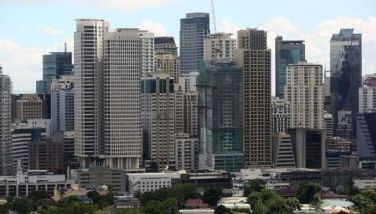PECC in Manila

On Sept. 11-12, the Pacific Economic Cooperation Council (PECC) will hold its 23rd General Meeting in Manila. The Philippine National Committee for PECC, under its current chair, Ambassador Tony Basilio, is hosting the event, 16 years after we last hosted this major event in the calendar of Asia-Pacific think fest on regional cooperation.
PECC has been around for 40 years and its unique tripartite membership of senior leaders in government, business, and academe, acting in their private capacity in an informal setting, has allowed it to develop credible strategic views that has helped drive regional economic integration. It was out of a PECC recommendation that Australia and Japan initiated a forum in 1989 that would eventually become the Asia-Pacific Economic Cooperation (APEC) group of 21 economies. PECC’s forward thinking approach to regional economic issues has earned it a permanent place on the table in APEC meetings, bar of course the leaders’ meeting. It is the only non-Government institution granted this privilege in APEC.
Although tabbed as a general meeting, this event is actually an occasion for PECC to publicly engage the stakeholders in the region and particularly the host economy in a dialogue on pressing economic issues in the Asia Pacific. This meeting, however, is taking place under very different circumstances than when I had the privilege of organizing the 13th meeting in 1999 in Manila in my capacity then as International chair of PECC.
At that time, the Asian side of the Asia-Pacific region was just recovering from the financial crisis of 1997, which started in Thailand and eventually spread across East Asia and even as far away as Brazil and Argentina. This was the year when the phrase “financial contagion” entered the lexicon of business. This would mark the tail end of a decade of phenomenal growth in the region. This growth was fueled by an unprecedented rise in manufacturing and exports in the region, primarily to the US and European markets. This was made possible by advances in technology and by enlightened government policies (including a successful outcome of the Uruguay Round which created the World Trade Organization) that practically obliterated physical barriers to the movement of goods and services across borders, thus, making them cheaper and accessible.
So in 1999 there was this optimism that despite the financial crisis – which by the way did not affect the Philippines with the severity experienced by Thailand, Malaysia, Japan, and South Korea – the good times would go on particularly with the rapid development and adoption of information technology. It became “de rigeur” to put an “E” prefix in anything to denote advanced thinking. It was in this light we adopted the theme “The Pacific E-conomy in the 21st Century”. We talked about a new global economic architecture that would provide a better way to deal with the cycle of boom and busts and to lessen the occurrence of financial crisis such as Asia experienced. These ideas became the building blocks of a new global economy, hinged on technology and the Internet, and aimed to generate prosperity – how APEC should adopt the way it does business in the 21st Century.
However, two things happened that burst the bubble of optimism as the decade came to a close. The first was the collapse of the dotcom bubble in 1997 and ended in spectacular fashion in 2000. Over exuberance over anything with an e-prefix and unbounded optimism of the promise of the new economy despite the lack of viability in the business models of these dotcoms led to the meteoric rise in stock market prices in industrial economies only to fall spectacularly when the money ran out in companies who were seen to be selling mere hype and illusion. The resulting panic wiped out trillions of dollars in market value and dampened enthusiasm in the promise of the new economy. Visions of people scooting around like the Jetsons in personal flying saucers in futuristic cities gave way to a more realistic, pragmatic view of applying new technologies and ways of doing business to the old economy to achieve productivity gains. This, in turn, would give rise to the next cycle of economic growth.
November 1999 was also the time when one of the most massive and sometimes violent demonstration in United States history took place. It happened in Seattle when ministers of the WTO member-economies gathered for their third meeting to what was supposed to be the occasion to launch the “Millennium Round of Multilateral Negotiations”. One of the outcomes of our PECC General Meeting earlier that October was to wish the ministers well and express strong support for a successful outcome. The meeting ended abruptly as the streets of Seattle turned into a battleground between police and the demonstrators, culminating in what would be later named the “Battle of Seattle”. No doubt the commotion left much of Seattle sleepless. It would take two more years of wrangling before what would have been the “Millennium Round” was eventually launched in Doha – about “as far from the madding crowd and their frenzied strife”, according to Thomas Hardy, as can be so there would be no repeat of Seattle.
The demonstrations were the culmination of the growing anti-globalization sentiment which blamed its impact on widening the gap between “the haves and the have nots” and in the destruction of the environment. Even the United Nations itself in its 1999 Human Development report, advocated principles of performance for multinationals on labor standards, fair trade and environmental protection are needed to counter the negative effects of globalization on the poorest nations. An essential aspect of global governance is responsibility to people—to equity, to justice, to enlarging the choices of all”.
For the first time, the WTO came under fire as serving the interest of the multinationals. As one social critic at that time, Ronnie Hall, trade campaigner at Friends of the Earth International said: “The way it has used [its] powers is leading to a growing suspicion that its initials should really stand for World Take Over. In a series of rulings, it has struck down measures to help the world’s poor, protect the environment, and safeguard health in the interests of private (i.e., America) companies. The WTO appeared to be on a crusade to increase private profit at the expense of all other considerations, including the well-being and quality of life of the mass of the world’s people.” Perhaps in reference to the WTO foray into investment measures and IPR protection, he said, “It seems to have a relentless drive to extend its power.”
The effects of this anti-globalization sentiment still lingers and explain the reluctance of developing economies to fully embraced the Doha Round unless it lived up to its billing as the “Development Round”. Many still saw an agenda that was biased in favor of the developed economies as it covered issues relating to investments, services trade, business facilitation and intellectual property which would require measures beyond the border which many developing countries saw as infringing on their economic sovereignty.
So if one were to look for reasons why the United States is pushing for the Trans Pacific Partnership, then look no further than the stalled Doha Round, which the US has found it can no longer take leadership of. Instead, it has become more of a spoiler – much like India has but for an entirely different reason. The US is more offensive in nature, while India is more defensive. In pushing for the TPP and the Transatlantic Trade and Investment Partnership (TTIP), the US found a route to push its trade and investment agenda among presumably more sympathetic partners. But even this is bound to run into difficulties even with like-minded economies because interests are not perfectly symmetrical and even asymmetrical balance is hard to achieve especially since many factors outside the realm of economics – like politics and social norms which defy rationality – come into play.
This brings me to what I think are two important lessons from what happened subsequent to PECC XIII. One is that the judicious use of technology and innovative ways of doing business has the potential to genuinely lead to economic efficiency and higher productivity. The other is that “globalization with a human face” – for so long derided as an emotional rather than a practical response and runs smack of the discredited aspects of socialism – can find expression with the use of technology to bring the benefits of globalization to all sectors of society. This translates well for the more disaggregated production in modern supply chains to happen, for micro and small enterprises to be drawn into the economic mainstream, and for public services to be delivered online even to the remotest areas.
So despite what happened subsequently post-1999, I think we were not barking up the wrong tree when we placed a lot of faith in technology – particularly digital devices and the Internet – to achieve inclusive growth, in our Meeting.
I have no doubt that the Twenty-third Meeting will likewise yield forward-looking thinking that has characterized PECC throughout its forty years of existence.
- Latest
- Trending

























